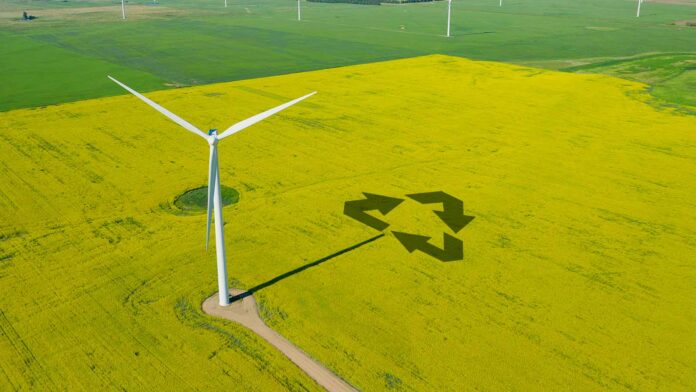The Wind Blade Recycling Process
The good news is that more than 90% of wind turbines, including the tower and nacelle, are easily recyclable once they’ve reached the end of their lifespan. After the structure is dismantled, the metal components can be reused. However, the main challenge lies in recycling the wind blades. Built to last for decades, they are made from composite materials, including resin and fiberglass.
At today’s recycling plants, mechanical, thermal, or chemical methods are used to recover the raw materials and give them a second life. This can involve grinding, heating, or using chemicals to process the materials.
Another option the wind industry is exploring is repurposing blades into urban furniture like canopies or even structures like bridges.
The Biomass Alternative
A recent initiative aims to make wind blade recycling easier by taking a different approach: replacing traditional resins with a biodegradable alternative. This research, recently published in Science, has resulted in a material called PECAN, which has properties similar to synthetic resins but is derived from biomass.
Scientists at the U.S. National Renewable Energy Laboratory (NREL) have developed this new resin from bio-based sugars, which offers the same strength as the materials used in conventional blades. One concern was whether PECAN would deform and affect the blade’s aerodynamic properties, but tests have confirmed its strength.
Additionally, this resin can undergo a mild chemical treatment that enables it to be recovered and reused indefinitely. In laboratory tests, researchers successfully decomposed a prototype blade in just six hours, promoting circular economy principles in wind energy and integrates recycling considerations into the preliminary design phases.
Blades Reborn as Sneakers
Even without biodegradable resin, wind blade materials can be recycled through chemical, thermal, or mechanical separation processes. A striking example of this is the transformation of blades from ACCIONA Energía’s wind farm in Aibar, Navarra, into the soles of a special edition of sneakers by a well-known fashion brand.
In this case, the resin from the blades was crushed and micronized into powder. The powder was then mixed with rubber and molded into soles using thermocompression. You can read more about this fascinating initiative on this page.
Conclusion
The wind industry is facing a new challenge: recycling wind blades. With the development of biodegradable resin and innovative recycling techniques, the task is becoming easier. As the industry continues to grow, it is crucial to consider the recycling of wind blades to reduce waste and promote a circular economy.

